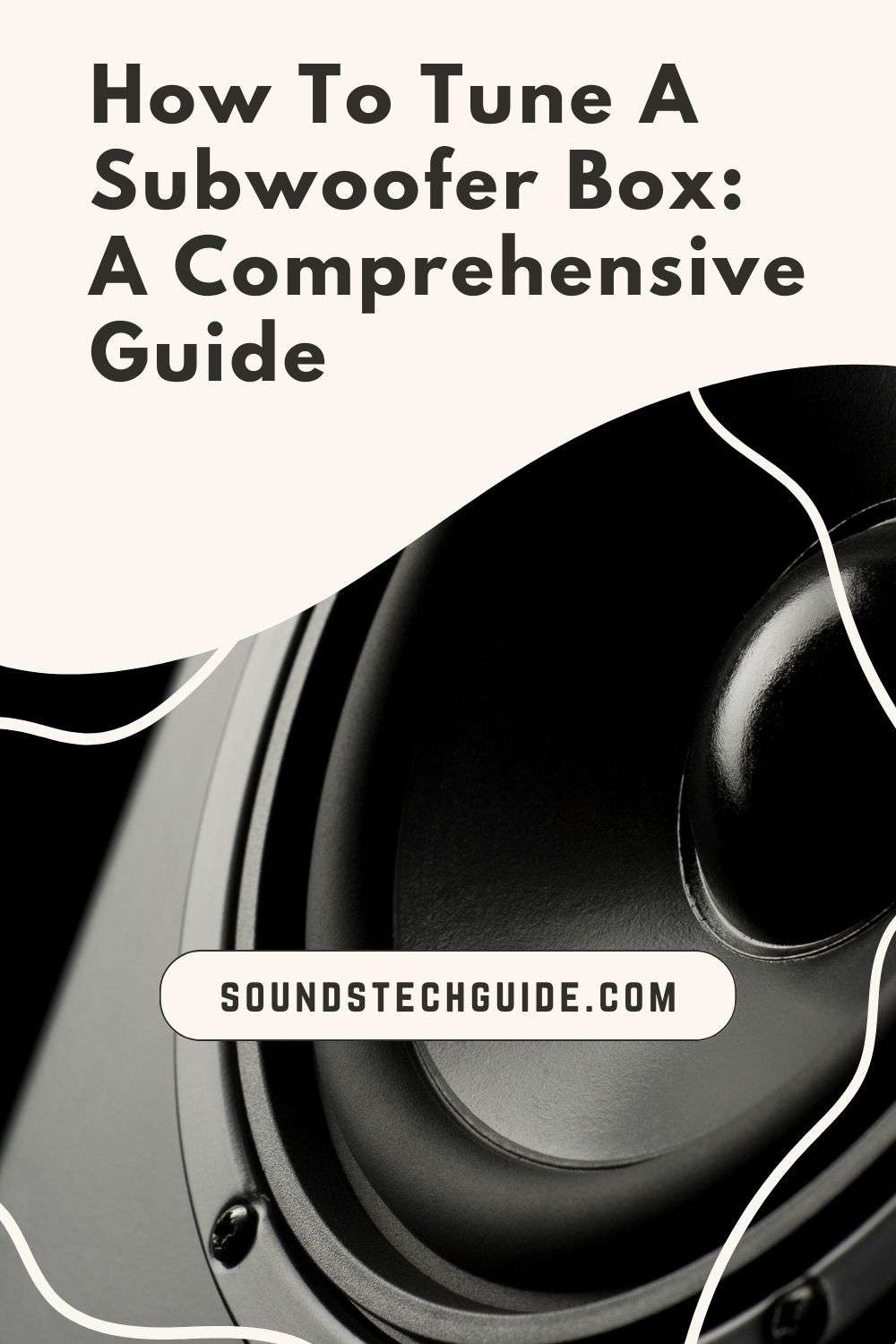Subwoofers are the backbone of any audio system, providing the low-frequency foundation that adds depth and realism to your favorite music, movies, and games. However, achieving optimal performance from your subwoofer requires more than just plugging it in and cranking up the volume. Tuning your subwoofer box is essential for unlocking its full potential and delivering the best possible sound quality. In this guide, we’ll delve into the intricacies of subwoofer box tuning, providing you with the knowledge and tools to elevate your audio experience to new heights.
Understanding Subwoofer Box Tuning
Subwoofer box tuning involves optimizing the design and settings of your subwoofer enclosure to achieve the desired bass response. By carefully tuning your subwoofer box, you can enhance bass clarity, minimize distortion, and seamlessly integrate your subwoofer with your existing speakers. Key factors to consider include the type of enclosure, enclosure volume, port design (if applicable), and crossover settings.
Types of Subwoofer Enclosures
To begin, let’s explore the different types of subwoofer enclosures and their characteristics:
- Sealed Enclosures: Sealed enclosures, also known as acoustic suspension enclosures, provide tight and accurate bass response. They are relatively straightforward to construct and are well-suited for applications where space is limited. Sealed enclosures excel at delivering precise, controlled bass but may require more amplifier power to achieve high output levels.
- Ported Enclosures: Ported enclosures, or bass reflex enclosures, utilize a tuned port to enhance low-frequency output. They are more efficient than sealed enclosures and can produce louder bass with less power. Ported enclosures are ideal for applications where deep bass extension is desired, but proper tuning is essential to prevent port noise and distortion.
- Bandpass Enclosures: Bandpass enclosures are designed to maximize efficiency within a specific frequency range. They feature two chambers – one sealed and one ported – with the woofer mounted between them. Bandpass enclosures can deliver significant output in their tuned range but are less versatile than sealed or ported designs.
- Infinite Baffle Enclosures: Infinite baffle enclosures utilize the space behind a car’s rear seat or a wall as the enclosure. They offer natural roll-off characteristics and can provide deep, controlled bass with the right driver selection. However, infinite baffle installations require careful planning to minimize resonances and achieve optimal performance.
Steps to Tune Your Subwoofer Box
Now that we’ve covered the basics, let’s outline the step-by-step process of tuning your subwoofer box for optimal performance:
- Choose the Right Enclosure Type: Select an enclosure type based on your listening preferences, available space, and the specific characteristics of your subwoofer. Consider factors such as bass extension, efficiency, and enclosure size when making your decision.
- Calculate Enclosure Volume: Determine the optimal volume for your subwoofer enclosure using manufacturer specifications or online calculators. Proper enclosure volume is crucial for achieving the desired bass response and minimizing distortion.
- Design and Construct the Enclosure: Construct or purchase an enclosure that meets the volume requirements and provides adequate internal bracing for rigidity. High-quality construction materials and techniques can help minimize vibrations and resonance, enhancing overall sound quality.
- Tune the Port (If Applicable): If you’re using a ported enclosure, calculate the port length and diameter for the desired tuning frequency. Experiment with different port configurations to achieve the optimal balance between low-frequency extension and port velocity. Proper port tuning is essential for maximizing bass output while minimizing turbulence and distortion.
- Set Crossover and Equalization: Utilize the crossover controls on your amplifier or receiver to blend the subwoofer with your main speakers seamlessly. Adjust the crossover frequency and slope to ensure a smooth transition between the subwoofer and satellites. Additionally, use equalization (EQ) settings to correct for room acoustics and fine-tune the bass response to your preferences.
- Test and Adjust: Play a variety of music tracks and movie scenes to evaluate the subwoofer’s performance. Listen for any signs of distortion, port noise, or frequency peaks, and adjust the settings accordingly. Take your time to find the perfect balance between impact, clarity, and extension, ensuring an immersive listening experience across a range of content.
FAQs
Q: How do I know if my subwoofer box is tuned correctly?
A: A properly tuned subwoofer box will deliver deep, tight bass without distortion or excessive port noise. You can use a variety of test tracks and frequency sweeps to evaluate the bass response and adjust settings accordingly.
Q: Can I tune my subwoofer box without specialized equipment?
A: While dedicated audio measurement equipment can be helpful for precise tuning, you can achieve excellent results using basic tools such as a sound level meter, test tones, and your ears. Experimentation and careful listening are key to fine-tuning your subwoofer box.
Q: How do I prevent resonance and vibrations in my subwoofer enclosure?
A: To minimize resonance and vibrations, ensure that your enclosure is constructed from sturdy materials and features adequate internal bracing. Damping materials such as polyfill can also help absorb internal reflections and improve overall sound quality.
Q: What should I do if I experience port noise or chuffing from my ported enclosure?
A: Port noise or chuffing can occur if the port is too small or if the air velocity through the port exceeds its maximum capacity. Try increasing the port diameter or lengthening the port to reduce turbulence and improve airflow. Additionally, rounding the edges of the port can help smooth airflow and reduce noise.
Q: How can I integrate my subwoofer with my main speakers for a seamless listening experience?
A: Use the crossover controls on your amplifier or receiver to set the crossover frequency and slope for your subwoofer. Aim for a smooth transition between the subwoofer and main speakers, ensuring that bass frequencies are directed to the subwoofer while midrange and treble frequencies are sent to the main speakers. Experiment with crossover settings to find the optimal balance for your setup.
Conclusion
Tuning your subwoofer box is a rewarding endeavor that can significantly enhance your audio experience. By understanding the principles of enclosure design and following the steps outlined in this guide, you can unlock the full potential of your subwoofer system. Experiment with different settings and configurations to tailor the sound to your preferences and listening environment. With patience and attention to detail, you’ll enjoy deep, powerful bass that brings your music, movies, and games to life like never before.
You might also like,

